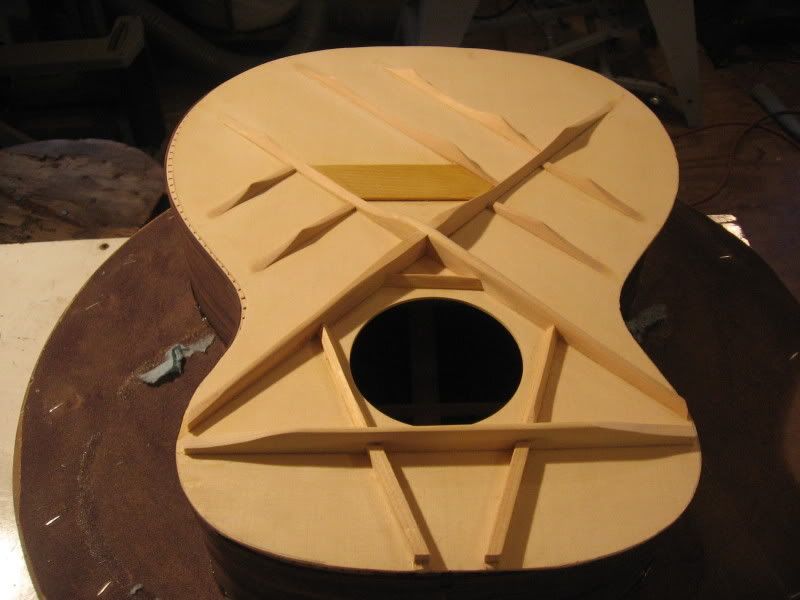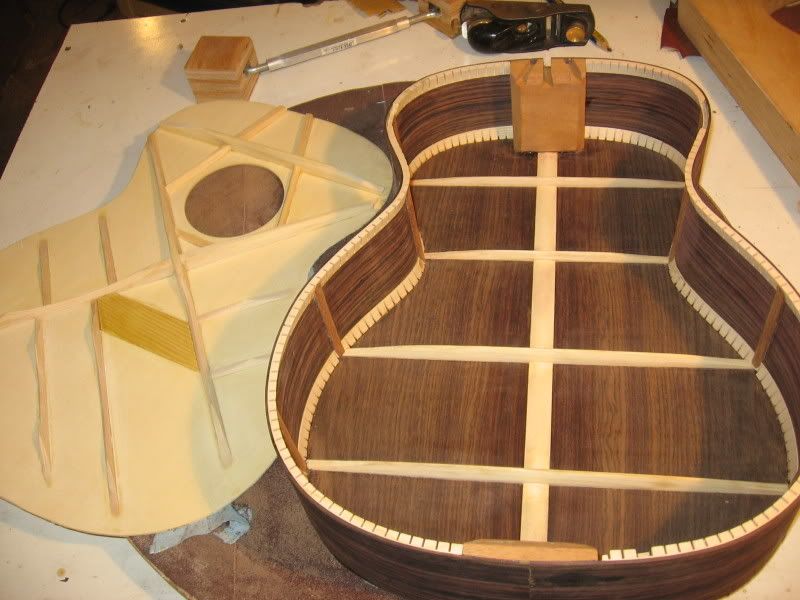Frank, I don't have a hard answer for that. I confess I have my own hesitation to scalloping up there, just due to compromising the structural integrity of the box given the amount of load on the upper bout. I dunno. Like we discuss so often here, everything in building is a compromise, just find what works for you. And it may be that the upper bout can be built even lighter with some alternate method to carry the load up there. My personal feeling is that this is where we all need to listen up to the guys who HAVE been building for decades and HAVE seen the long term effects over the life of a guitar. I would hate to find out several years into my "career" that all my early guitars are now failures due to a too-light build design. Your reputation is everything - hard to build, easy to lose, near impossible to get back.
Now, the buttresses like Todd mentioned and several builders use would probably be an even better design and I've often pondered on doing something like that. I'll bet you could really lighten the bracing with such a design. I confess my biggest hesitation to using them is just simply being able to see these two struts through the soundhole. That may sound like a silly reason but, when you build traditional designs there is a certain expectation. I don't know that bluegrassers, etc, would be very accepting of them just for that reason. Although Mario has proven that bluegrassers today are much more accepting of innovation than in times past but, still, even his guitars are pretty traditional looking from the outside.
Todd, it's conceivable that these struts could run to the waist like the typical flying buttress does. I don't believe it would be quite as effective as the buttress due to not having the triangulated - how am I trying to say this - not attaching lower down in the rims. Running these braces out like you mentioned would allow more of the load to be transferred to the rims but, then, would be adding more bracing directly to the top which would need to be accounted for and built into the "system". It's worthy of consideration - and would alleviate the visual element of the flying buttresses - but I wonder how beneficial it would be. Once again, we're looking for that compromise we can live with. If the typical A-frame bracing is good enough to carry that load (and if anybody wonders, this is just a typical bracing style - not particularly unique to me), then when is good enough, well, "good enough"? I don't know.
I would be interested in people's thoughts on this, though.
|

